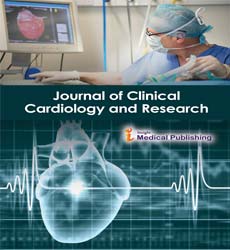Cardiovascular manifestations in down syndrome p
Abstract
Cardiac malformations in children with Down syndrome significantly contribute to morbidity and mortality, principally in the early years of life. Congenital heart diseases are characteristic and are a frequent cause of birth anomalies with an estimated prevalence of 4 to 5 per 1000 live births. The manifestations are primarily related to endocardial cushion defects, which may vary in severity. These are of major concern in these children as they may lead to complications like failure to thrive, congestive heart failure, and pulmonary vascular disease. In addition, Down’s is also associated with ventricular septal defect (VSD), patent ductus arteriosus (PDA), and tetralogy of fallot (TOF). The management of these cardiac abnormalities remains crucial as survival beyond one year of age needs careful cardiology evaluation followed by prompt medical and surgical care Cardiac malformations in children with Down syndrome significantly contribute to morbidity and mortality, principally in the early years of life. Congenital heart diseases are characteristic and are a frequent cause of birth anomalies with an estimated prevalence of 4 to 5 per 1000 live births. The manifestations are primarily related to endocardial cushion defects, which may vary in severity. These are of major concern in these children as they may lead to complications like failure to thrive, congestive heart failure, and pulmonary vascular disease. In addition, Down’s is also associated with ventricular septal defect (VSD), patent ductus arteriosus (PDA), and tetralogy of fallot (TOF). The management of these cardiac abnormalities remains crucial as survival beyond one year of age needs careful cardiology evaluation followed by prompt medical and surgical care.
Open Access Journals
- Aquaculture & Veterinary Science
- Chemistry & Chemical Sciences
- Clinical Sciences
- Engineering
- General Science
- Genetics & Molecular Biology
- Health Care & Nursing
- Immunology & Microbiology
- Materials Science
- Mathematics & Physics
- Medical Sciences
- Neurology & Psychiatry
- Oncology & Cancer Science
- Pharmaceutical Sciences
